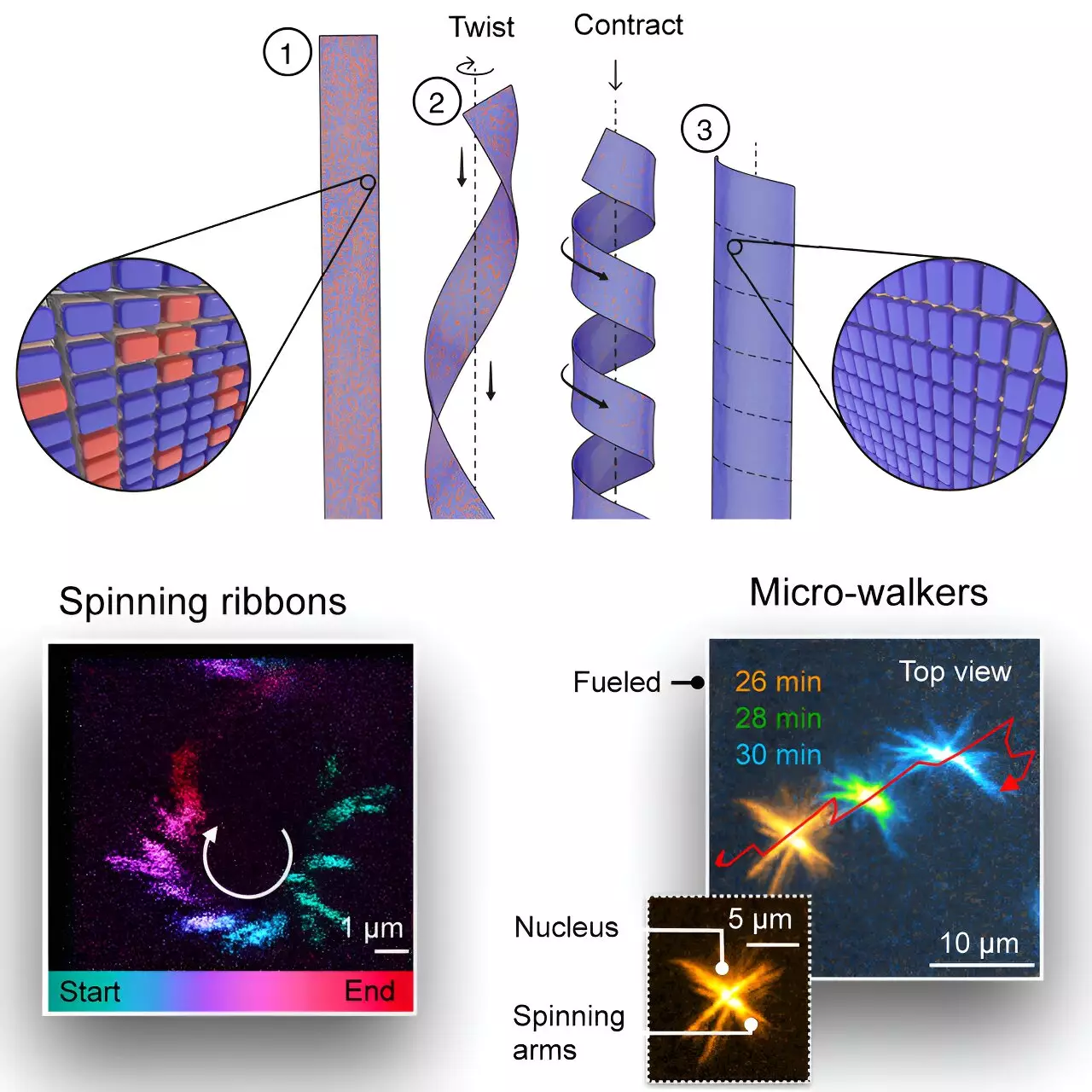Recent advancements at the Technical University of Munich (TUM) highlight the potential of creating intricate machines at the molecular level. Researchers, spearheaded by Brigitte Kriebisch, Christine Kriebisch, and Job Boekhoven, have engineered a groundbreaking supramolecular motor capable of harnessing chemical energy to produce mechanical movement. This development not only showcases the ingenuity of modern scientific research but also paves the way for revolutionary applications in nanotechnology and medicine.
The newly developed motor is a slender ribbon composed of specialized peptide molecules. When energy is introduced, the ribbon undergoes structural alignment, simulating the actions of a small fin and enabling it to propel objects effectively. Significantly, this innovation marks the first instance of chemical fuel being utilized to drive motion within supramolecular structures. Historically, the conversion of chemical energy into mechanical motion has been limited to biological systems, such as archaea that deploy adenosine triphosphate (ATP) to drive their flagella.
The researchers faithfully mimicked these biological processes, which had not been successfully replicated in synthetic setups before. As the scientists observe these reactions live under microscopy, they have made remarkable strides in unveiling the intricacies of this miniaturized motor, revealing the possibility of practical applications in the future.
One of the most interesting aspects of this motor is the researchers’ ability to manipulate its rotational velocity and direction through varying amounts of added chemical fuel and altering the molecular structures of the ribbons. This findings present an unprecedented level of control over such microscopic machines, offering potential for fine-tuning operations to suit specific requirements in various applications.
The integration of advanced optical measurement methods, developed in collaboration with Professor Matthias Rief, has allowed the team to ascertain the force exerted by these ribbons. Understanding the strength of the movements produced by the motors is a pivotal milestone, as it can inform future developments in practical uses of these molecular machines.
Looking ahead, the implications of this research are both fascinating and promising. The ability to assemble multiple rotating ribbons could lead to the creation of “micro-walkers” capable of navigating surfaces. These micro-walkers might one day facilitate drug delivery within biological systems, targeting specific areas such as tumor cells. However, it is important to note that the current chemical fuel utilized in this process poses potential risks to living organisms, underscoring the need for further research toward more biocompatible alternatives.
The development of supramolecular motors at TUM stands on the cutting edge of nanotechnology and artificial biology. As researchers continue to push the boundaries of what’s possible in the realm of molecular mechanics, the dream of creating tiny machines that can operate within the human body may no longer be confined to science fiction. The intricate dance of biology and synthetic innovation invites an exciting new era in numerous fields, particularly in medicine and targeted therapeutic strategies.


Leave a Reply